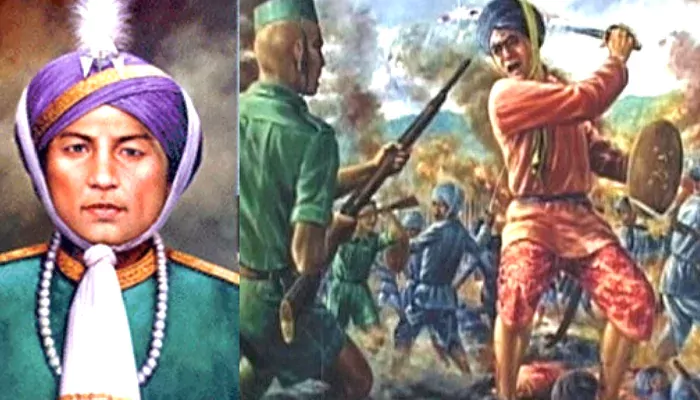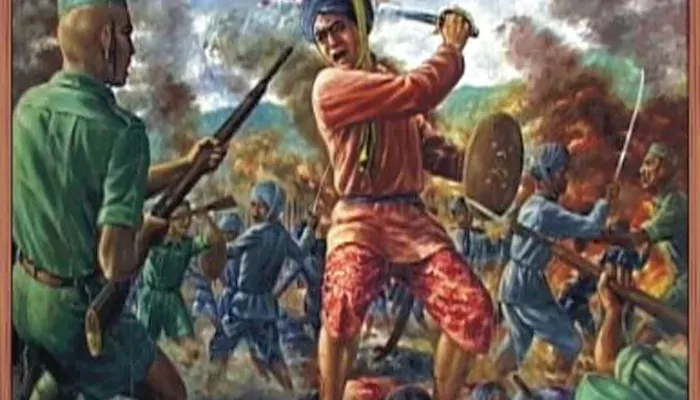
The Anglo-Manipur War’s forgotten heroes and their doomed resistance
In the spring of 1891, the princely state of Manipur stood at a crossroads. Nestled in the hills of northeast India, Manipur had long preserved its autonomy through shifting political tides. Yet, cracks had begun to show. Following years of internal conflict, palace intrigues, and pressure from the British Raj, the kingdom was drifting toward confrontation.
The tipping point came when a coup removed Maharaja Surachandra Singh. His younger brother, Tikendrajit Singh, an influential military leader, played a central role in the takeover. This defiance of British authority triggered an imperial response.
The British did not recognise the new power arrangement. In March 1891, Chief Commissioner James Quinton was sent to Imphal to arrest Tikendrajit. But what began as a diplomatic mission turned into a disaster. Manipuri forces stormed the British residency. Quinton and five other British officers were killed—an act that shocked the Raj and sealed Manipur’s fate.
This bold resistance wasn’t merely a reaction. It was a declaration. The Manipuri princes, especially Tikendrajit and Thangal General, believed they were defending their homeland’s right to self-rule.
In retaliation, the British launched a full-scale invasion. Three military columns advanced—one each from Kohima, Silchar, and Tamu (in Burma). The plan was clear: crush Manipur’s defiance and restore imperial order.
The Manipuris, outnumbered and outgunned, chose to fight. Their army was small—just over 3,000 men—but their determination was fierce. They fortified positions and prepared for a siege, knowing full well what British retribution could mean.

The fiercest battle unfolded at Khongjom on April 23, 1891. It was here that Major Paona Brajabasi, a revered Manipuri commander, led a brave but doomed stand. Alongside a few hundred soldiers, he resisted the advancing British forces with astonishing courage.
As the battle turned, Paona was offered life in exchange for surrender. He refused. Choosing honour over survival, he was executed on the battlefield. His death became a symbol of Manipur’s fierce independence, one remembered in ballads and memorials to this day.
By April 27, British troops captured Imphal and the historic Kangla Palace. The war was effectively over. The Manipuri flag was lowered. The British Raj had prevailed.
But the price was steep. Prince Tikendrajit and Thangal General were captured, court-martialled, and hanged publicly on August 13, 1891. Others were exiled to the Andaman Islands, where many perished in obscurity. These men were not just rebels. In the eyes of their people, they were martyrs.

Manipur did not forget. April 23 is observed as Khongjom Day, honouring the fallen warriors of the last battle. August 13 is Patriots’ Day, marking the martyrdom of Tikendrajit and Thangal.
These days are more than rituals—they are acts of remembrance. They recall a time when a small kingdom stood up to a global empire and chose resistance over surrender.
Monuments now mark the spots where decisions were made and lives were lost. Stories of bravery are passed down through generations. Some warriors, like Paona Brajabasi, are etched into local memory. Others remain unnamed, but not unloved.
The Anglo-Manipur War was short, but its legacy is long. It showed that resistance is possible, even when defeat is inevitable. It proved that identity, sovereignty, and pride can fuel a last stand—one that still echoes in the hills of Manipur.
This story isn’t just about the past. It’s a reminder that even the smallest voices can challenge power. And though Manipur fell in 1891, the spirit of its princes and people did not.
Their courage remains a guiding light for generations who believe in freedom, dignity, and the right to self-determination.